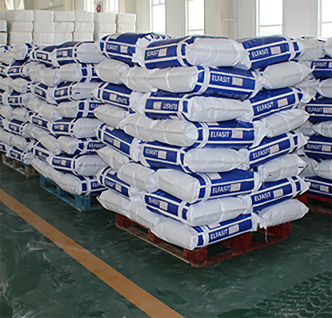
Nov . 09, 2024 05:18 Back to list
HPMC Applications in Enhancing Tile Adhesive Performance and Durability
Understanding HPMC for Tile Adhesive A Versatile Additive
Hydroxypropyl Methylcellulose (HPMC) is a widely used cellulose ether that has gained significant popularity in the construction industry, particularly in the formulation of tile adhesives. This versatile additive not only enhances the performance of adhesives but also plays a crucial role in improving the overall quality of tile installations. In this article, we will explore the properties of HPMC, its benefits in tile adhesives, and the factors to consider when using it.
What is HPMC?
HPMC is a semi-synthetic polymer derived from plant cellulose. Its modification involves the introduction of hydroxyl and methoxy groups, which not only render it soluble in water but also provide a range of functional properties suitable for various applications. HPMC is colorless, odorless, and non-toxic, making it an ideal additive for construction materials, including tile adhesives.
Benefits of HPMC in Tile Adhesives
1. Enhanced Workability One of the key advantages of incorporating HPMC in tile adhesives is improved workability. HPMC enhances the adhesive's viscosity, making it easier to apply. The creamy consistency allows for better spreadability, which is essential during the installation of tiles, especially in intricate patterns.
2. Increased Open Time Open time refers to the duration that the adhesive remains workable after being applied. HPMC extends the open time of tile adhesives, allowing for adjustments during the tile setting process. This property is particularly advantageous when working with larger tiles or during hot weather conditions, where evaporation rates can be high.
3. Improved Adhesion HPMC contributes to stronger bonding between tiles and substrates. It promotes better adhesion by increasing the surface area of the adhesive film, ensuring that the tiles securely bond to the surface. This feature is crucial for preventing tile lift and ensuring long-lasting installations.
hpmc for tile adhesive

4. Water Retention Tile adhesives containing HPMC exhibit excellent water retention properties. This is critical during the curing process, as it prevents premature drying of the adhesive. Adequate moisture retention allows for better hydration of the Portland cement in the adhesive, leading to enhanced strength development over time.
5. Flexibility and Durability HPMC-modified adhesives offer increased flexibility, which helps to accommodate minor movements and stresses in the substrate. This flexibility is particularly important for installations on substrates that may experience thermal expansion or contraction. Moreover, HPMC contributes to the durability of the adhesive, enhancing its resistance to cracking and water damage.
Considerations When Using HPMC
While HPMC provides numerous benefits, there are several factors to consider when incorporating it into tile adhesives. The concentration of HPMC should be carefully selected based on the specific formulation requirements. Excessive use may lead to issues such as poor adhesion or longer curing times.
Additionally, the choice of HPMC grade is essential. Different grades offer varying viscosities and properties, so it is crucial to select the appropriate type based on the desired performance characteristics of the adhesive.
Furthermore, proper mixing techniques should be employed to ensure uniform distribution of HPMC throughout the adhesive. Clumping or uneven distribution can negatively impact the performance of the adhesive, leading to compromised quality in tile installations.
Conclusion
Hydroxypropyl Methylcellulose is an invaluable additive in the formulation of tile adhesives, offering a multitude of benefits that enhance performance and durability. Its ability to improve workability, extend open time, and increase adhesion makes it an essential component for successful tile installations. As the construction industry continues to evolve, the role of HPMC is likely to expand, further solidifying its status as a key ingredient in high-quality tile adhesives. By understanding and effectively utilizing HPMC, manufacturers and contractors can achieve superior results in their tile projects, ensuring lasting beauty and functionality.
-
Versatile Hpmc Uses in Different Industries
NewsJun.19,2025
-
Redispersible Powder's Role in Enhancing Durability of Construction Products
NewsJun.19,2025
-
Hydroxyethyl Cellulose Applications Driving Green Industrial Processes
NewsJun.19,2025
-
Exploring Different Redispersible Polymer Powder
NewsJun.19,2025
-
Choosing the Right Mortar Bonding Agent
NewsJun.19,2025
-
Applications and Significance of China Hpmc in Modern Industries
NewsJun.19,2025







